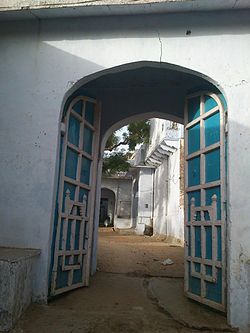This article needs additional citations for verification .(January 2013) |
Bagholi | |
|---|---|
Village | |
 Phool Singh Ji Ki Haveli, Bagholi | |
| Coordinates: 27°46′12″N75°40′47″E / 27.770102°N 75.679594°E | |
| Country | India |
| State | Rajasthan |
| District | Jhunjhunu district |
| Time zone | UTC+5:30 (IST) |
Bagholi is a village located in Jhunjhunu district, Rajasthan, India. It is within a locally self-governing Scheduled Area.
The village has the area's first electrical grid and provides water to the villages and nearby khetri (English: copper mines). [1]
